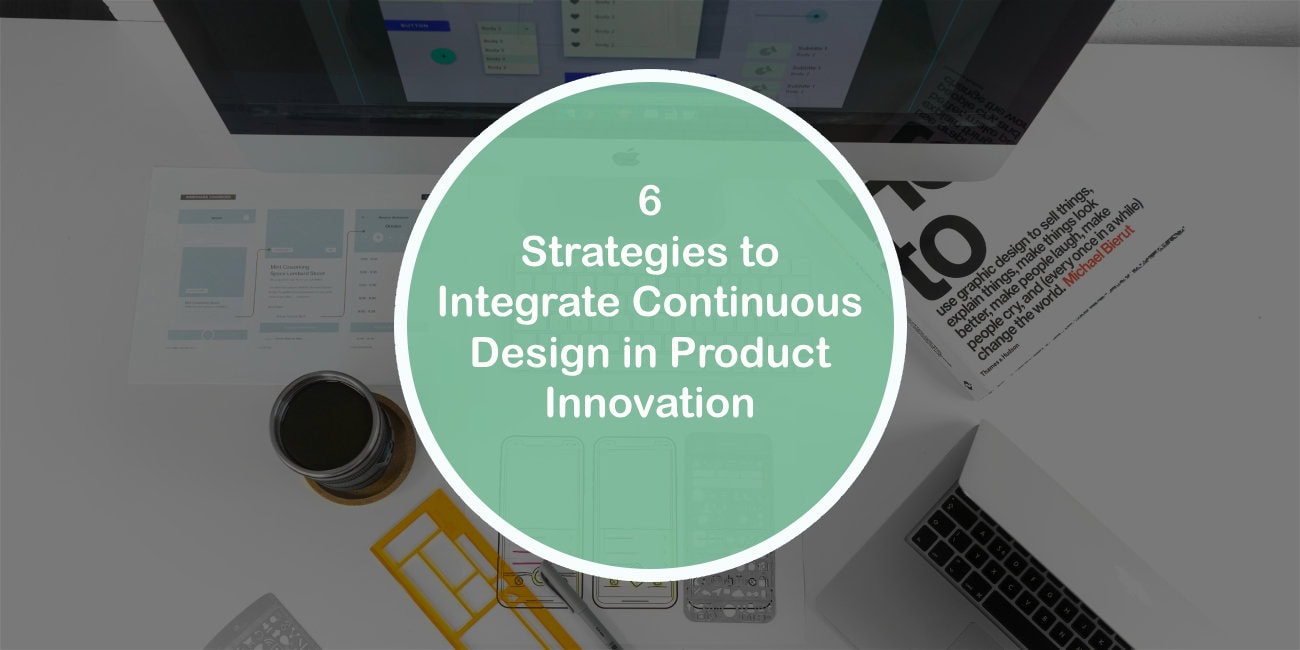Adding continuous design to your innovation process can be like the excitement and transformation of a demo day in a home renovation project.
Integrating continuous design into your process means blending design, development, and user feedback into one smooth workflow, rather than working in separate ‘silos’. This requires more teamwork and reliance on different departments, which can be challenging. However, when it works, it leads to a situation where everyone’s input is valuable, feedback from users is taken seriously, time and money are used efficiently, and both the team and the users end up happier.
Continuous design isn’t a straightforward, step-by-step process. Instead, design, development, and strategy occur at the same time, fueled by constant customer feedback and regular updates. To manage this complex process effectively, there are six essential elements that product and engineering leaders need to include to make sure their continuous design efforts are successful. For further insights and guidance, visit Linkup Studio.
Actively Gather Ideas
Continuous design involves regularly gathering feedback to understand what’s effective and what isn’t. This feedback should come from internal and external team members, and crucially, from users. As you incorporate this feedback in the short term, you’ll find that new market opportunities, shifts in product value, and new long-term business goals will evolve your initial ideas. It’s important to keep these insights in a place that is clear, easy to access, and regularly reviewed and updated by the team.
Invest in Concept Development
Determining if ideas should be pursued further often involves simple, preliminary visualizations. Concepting helps ensure everyone understands and agrees on the basic end goal. This should be seen as an initial investment that saves time and money, compared to extensive and expensive design explorations later on.
Test Regularly
This is where the principle of “learn quickly and iterate” comes into play. By having a visual representation of a concept, you can gather feedback on whether it effectively solves a user’s problem. Using concepts to collect this feedback helps ensure that users concentrate on the intended outcomes and possible approaches, without getting sidetracked by the design details.
After reviewing the feedback, teams might choose to modify the concept with further adjustments, discard it entirely, or fully commit if the feedback supports the direction. For ideas that lead to substantial changes, it’s wise to test them repeatedly before final approval. This process will likely reveal aspects to enhance or, even better, elements that can be eliminated.
Implement No-Code and Low-Code Experiments
Creating a working prototype with the expectation that it will change as the process progresses is another way to break down barriers between departments. Conducting a trial ensures that everyone follows the same steps to collect customer feedback, which helps advance the development process. For more insights on selecting the right UI/UX designer to facilitate this process, check out this link: https://linkupst.com/blog/your-ultimate-guide-to-a-stress-free-selection-of-an-outsourcing-ui-ux-designer.
A word of caution: If the organization isn’t familiar with how continuous design functions, the trial phase is often where the process tends to stall. Using less expensive no-code and low-code methods can jump-start future projects by addressing the common concern of wastefulness that many organizations face when they start using continuous design. These methods also make it easier to involve engineers earlier in the process, which can enhance execution later in development.
Confirm Your Strategy
The validation stage involves testing the prototype to see if it is valuable and easy to use. At this point, users are assessing the product’s initial functional state rather than just a visual concept. Feedback should concentrate on usability, the ability to meet goals, and the product’s initial quality. It is advisable to test prototypes with around five potential or current users. Jakob Nielsen from the Nielsen Norman Group discusses why testing with five users is optimal. For a detailed explanation, watch this video by Jakob Nielsen.
Learn as You Build and Release
Remember, releasing a product does not mean the end of the continuous design process. It’s a chance to gather quantitative data during development and early customer trials to maximize return on investment. Moving from a functional prototype to full development provides valuable insights for a successful launch. Throughout the building and release phases, improvements are integrated back into the product roadmap, as insights gained from market feedback lead to immediate enhancements. For more information on managing these processes, explore digital product design services.
This involves collecting qualitative data through user feedback and quantitative data through performance analytics. This doesn’t mean the product will constantly change, especially not its external aspects, but there is potential for minor interface adjustments or behind-the-scenes improvements. These changes might not be visible to users, yet they can significantly enhance the product’s performance.
The advantage of continuous design is that it enables teams to innovate swiftly and adapt as they proceed. This leads to a more agile delivery method. The core principles of continuous design—gathering knowledge through feedback and testing, engaging with end users, and keeping up with market trends—when applied effectively, can help break down departmental barriers, save time and money, and also offer a clear competitive edge.

